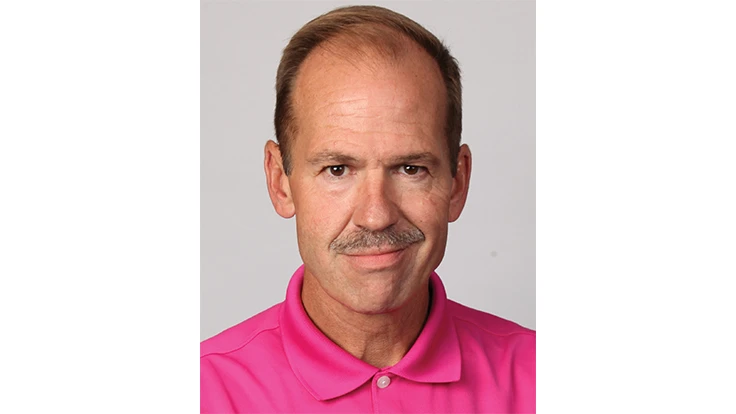
 Pat Jones Pat JonesEditorial Director and Publisher |
I’ve been up to my butt in this crazy business since I was a 25-year-old idiot who accidentally got a job as a writer at GCSAA headquarters in Lawrence. Now I’m a 53-year-old idiot who accidentally ended up running a couple of magazines in Cleveland. A couple of magazines, you ask? Yes, GCI is not my only baby. Two years ago, I also became publisher of Lawn & Landscape magazine here at GIE Media. That’s amazing since L&L has been the “bible” of the landscaping business for 35 years. My job is not to screw that up. The commonality between the two publications is turf, obviously. GCI and L&L both have part of their focus on the maintenance of turf. Many of the advertisers who support GCI also sell into the landscape market so the two magazines are joined at the hip from a business standpoint. But the similarity in the content and industry trends ends there. The L&L market is actually multiple segments rolled up into one big industry. There is traditional turf maintenance, as performed by lawn care operators and general maintenance contractors. There’s landscape architecture and construction, often referred to as the design/build segment. There’s commercial and residential. There are irrigation contractors who specialize in water movement and management. There’s even snow and ice removal. It’s a big, rangy and fascinating market. And right now, it’s one industry that’s growing nicely. As the economy has come back, so have housing starts and commercial property construction. That’s just part of what’s driving the business. There are also some big trends that are making backyards a focus of a lot of people’s remodeling spending. Americans are increasingly interested in “outdoor living.” No, not camping. I’m talking fancy outdoor kitchens, firepits, water features and landscaped patio areas. That drives business for folks who sell and install pavers, stonework, lighting, irrigation and even cool, big-ass grill systems. Finally, after the recession drove a lot of homeowners and businesses to DIY mowing and fertilization, the trend is back toward outsourcing what some people consider to be the tiresome task of mowing one’s own lawn. In short, the pro landscape business is roaring. You think you’re having trouble finding labor? It’s a huge issue in the landscape business. Not only are the good contractors trying to keep up with a backlog of business, they also got hit harder by changes in the H-2B laws that allowed guest workers into the country seasonally. I talk with many who say, “Most of the people we want to hire don’t have the right visa, have a bad driving record or can’t pass a drug test.” Sound familiar? With the exception of a few giants like BrightView (a $2-billion megacompany formed last year by the merger of ValleyCrest and Brickman) and TruGreen, the market is dominated by small businesspeople. Yes, there are some great regional players and even growing franchise operations like Weed Man and Grounds Guys, but the average contractor has revenues of less than $500,000 annually, a handful of employees and a lot of stress. They worry about managing the business side while also being needed in the field. They worry about fuel costs and fertilizer price spikes. Mostly, they worry about keeping up and riding the growth wave that’s pushing the landscape business far faster than anything golf has seen in a while. All that said, they are good people who are just as passionate about making the world a greener, better place as any superintendent. Many are active in their local turf associations and other industry groups. More than 80 percent of them said they voted in every election in a recent study we did. Yes, the golf and landscape markets have similarities and differences that are clear to us. But, when the time comes for regulation, we are often lumped together. The current drought emergency in California is a great example. Neither golf nor landscape was fully prepared for the extent to which the state intends to crack down on irrigation. The proposed rationing plan includes $100 million to pay people to convert turf to less-thirsty landscapes. It’s going to be a sea-change for everyone who manages grass whether it’s cut at 2” or .09”. In the past, golf has managed to get itself exempted from regulations aimed at the Green Industry. I get that, but I also see that our similarities will always link us together more than our differences set us apart. As golf continues to deal with its own issues, we need to resist the temptation to throw our landscape brethren under the activist bus. After all, as Benjamin Franklin said at the time of the signing of the Declaration, “We must, indeed, all hang together or, most assuredly, we shall all hang separately.”
|

Explore the April 2015 Issue
Check out more from this issue and find your next story to read.
Latest from Golf Course Industry
- Editor’s notebook: Green Start Academy 2024
- USGA focuses on inclusion, sustainability in 2024
- Greens with Envy 65: Carolina on our mind
- Five Iron Golf expands into Minnesota
- Global sports group 54 invests in Turfgrass
- Hawaii's Mauna Kea Golf Course announces reopening
- Georgia GCSA honors superintendent of the year
- Reel Turf Techs: Alex Tessman





